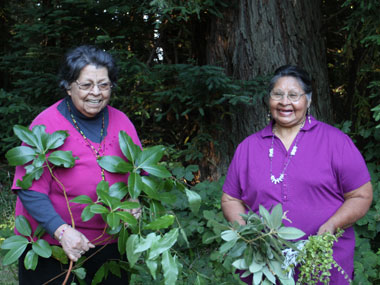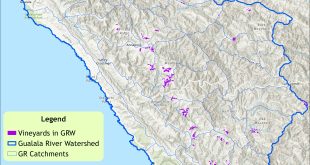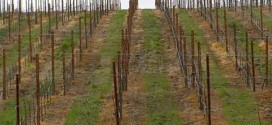Artesa Vineyards & Winery
What they said on Facebook
compared to their
draft Environmental Impact Report
After reading “Redwoods versus red wine” on the front page of the LA Times in late August, Marie Casias of Los Angeles started an online petition opposing destruction of redwood forests.
The petition gained almost 90,000 signatures, and in early October, Marie and dozens of those signers took to Artesa’s Facebook page to express their displeasure with the project. Artesa was forced to respond. Unfortunately, there are some problems with what they said.
Here is a comparison of Artesa’s statement on Facebook (October 7, 2011) with what they said in the draft Environmental Impact Report (EIR) for their Fairfax vineyard conversion project:
|
“…there are not 154 acres of coastal redwood forest on the property because it was clear cut before we purchased it.” |
According to Artesa’s draft Environmental Impact Report, most of the acreage in their project will be “…converted from young-growth timber (redwood and Douglas-fir) to vineyard.” (Ch1, p2)
The exact number of acres in their plan has changed repeatedly; their current plan calls for somewhere between 130 and 154 acres of coastal redwood forest to be destroyed / “converted” to vineyard.
The site was NOT recently clearcut. According to the draft EIR, “Timber on the project site is located in even aged stands that are approximately 50 to 75 years old.” (Ch2, p5)
It’s true that 50 to 75 years is relatively young for redwoods, but even young redwoods are BIG trees, and a forest of them is impressive. Take a look at these photos of the forest Artesa wants to clearcut for their vineyard:
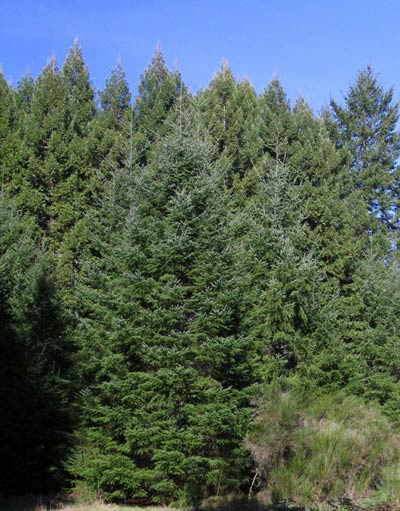
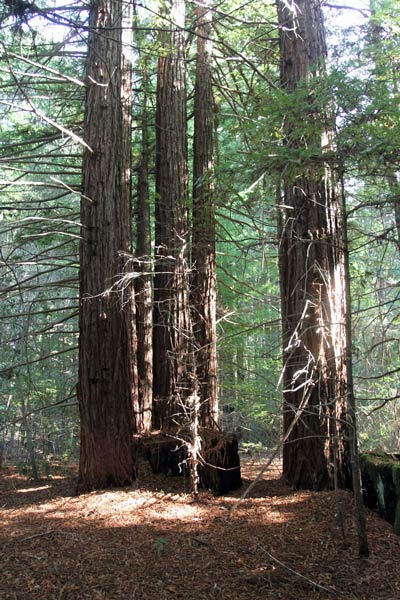
Redwood & Doug fir forest on the Fairfax property in Annapolis,
purchased by Artesa Vineyards & Winery
for “conversion” to vineyard.
This is forested land, not a clearcut.
|
“Our plans will not impact the |
Here’s what Artesa said in the Cultural Resources section of their recirculated draft EIR: “Six cultural sites were observed and recorded by Maximilian Neri during initial site investigations…” (Ch3.5, p7) “Since the release of the DEIR for public review, six previously unrecorded archaeological resources were identified…” (Ch3.5, p20) “The various prehistoric resources discovered within the project area reflect both intensive and generalized use of the project area by prehistoric peoples…” (Ch3.5, p25)
“Although the known significant archaeological sites within the project area are to be avoided during project implementation, other portions of the project area could contain additional significant prehistoric sites that have yet to be discovered. [Furthermore, the potential exists that unknown human remains exist on the project site. – This sentence appeared in the original draft EIR, but was deleted in the recirculated version.] Ground-related construction activities could result in the discovery of presently unidentified cultural resources. Therefore, implementation of the proposed project could result in a potentially significant impact to unknown prehistoric cultural resources…” (Ch3.5, pp30-31)
Additional quotes
|
– Archaeologist Dr. Peter Schmidt |
|
– Violet Parrish Chappell and Vivian Parrish Wilder |
For additional information, see:
Artesa (“Fairfax”) vineyard conversion EIR CAL FIRE released the Final Environmental Impact Report (EIR) for Artesa Winery’s plan to clear-cut 154 acres of coastal redwood forest to plant a vineyard in Annapolis. The EIR states that the project will have no significant environmental or cultural impacts.
CAL FIRE released the Final Environmental Impact Report (EIR) for Artesa Winery’s plan to clear-cut 154 acres of coastal redwood forest to plant a vineyard in Annapolis. The EIR states that the project will have no significant environmental or cultural impacts.
Codorníu’s statement & our response Following a tidal wave of negative publicity (over 125,000 signatures on petitions opposing their project), Codorníu issues a statement defending their project, and Friends of the Gualala River responds.
Following a tidal wave of negative publicity (over 125,000 signatures on petitions opposing their project), Codorníu issues a statement defending their project, and Friends of the Gualala River responds.
 Friends of Gualala River Protecting the Gualala River watershed and the species living within it
Friends of Gualala River Protecting the Gualala River watershed and the species living within it
 “…this particular development entails the conversion of 130 acres of Redwood and mixed timberland into vineyard. Forest conversion not only contradicts the Sonoma County General Plan,
“…this particular development entails the conversion of 130 acres of Redwood and mixed timberland into vineyard. Forest conversion not only contradicts the Sonoma County General Plan,  but it also threatens key heritage sites that are critical to the cultural well-being of Native peoples.”
but it also threatens key heritage sites that are critical to the cultural well-being of Native peoples.” 
